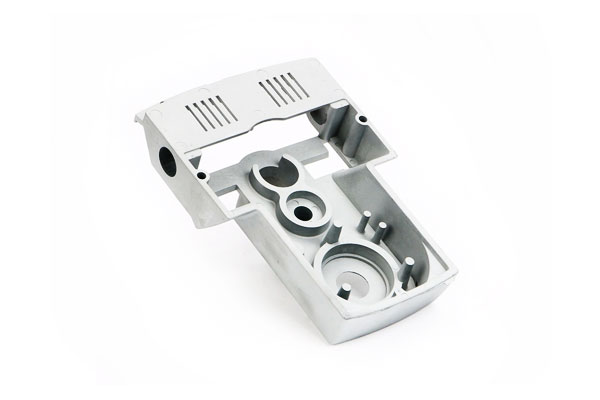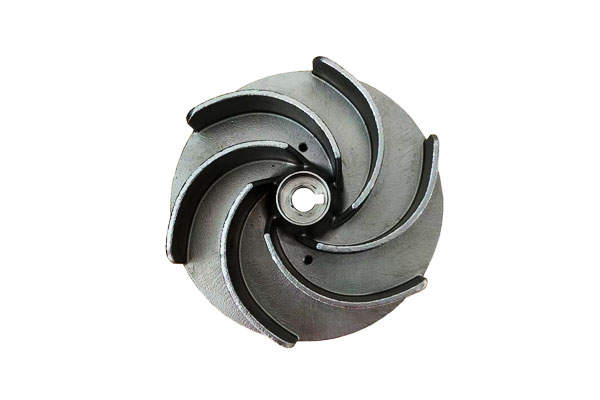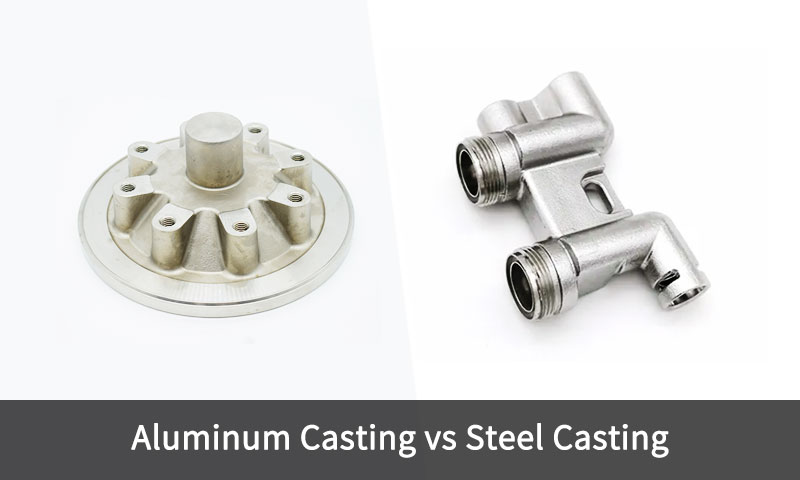1. 介绍
Aluminum vs Steel Casting — choosing between these two foundational materials shapes component performance, cost and manufacturability across industries from automotive to energy.
This comparison is not merely about metal chemistry: it encompasses density and stiffness, 热行为, casting process compatibility, secondary processing (热处理, 表面工程), lifecycle cost and application-specific reliability.
Engineers and purchasers must therefore evaluate the entire system—loading, 温度, 环境, production volume and finish requirements—before specifying a metal and casting route.
2. Fundamental Material Differences Between Aluminum vs Steel
At the core of aluminum vs. steel casting lies a fundamental metallurgical and physical contrast that directly affects how each material behaves during casting, 加工, 和服务.
| 性能特性 | 铝 (例如。, 我 - ) | 钢 (例如。, carbon or low-alloy steels) | 工程意义 |
| 密度 (g/cm³) | 2.70 | 7.85 | Aluminum is ~65% lighter, offering major weight savings for transportation and aerospace. |
| 熔点 (°C) | 615–660 | 1425–1540 | Aluminum’s low melting point enables easier casting and lower energy consumption; steel requires specialized furnaces. |
| 导热率 (w/m·k) | 120–180 | 40–60 | Aluminum dissipates heat efficiently—ideal for engines, 热交换器, 和电子产品. |
| 具体强度 (MPa/ρ) | ~100–150 | ~70–90 | Despite lower absolute strength, aluminum’s strength-to-weight ratio surpasses that of steel. |
| 弹性模量 (GPA) | 70 | 200 | Steel is stiffer, providing better rigidity under load and vibration. |
耐腐蚀性 |
出色的 (forms Al₂O₃ layer) | 多变的; prone to rust without coatings | Aluminum resists oxidation naturally, while steel needs surface protection (绘画, 电镀, or alloying with Cr/Ni). |
| 可加工性 | 出色的 | Moderate to difficult | Aluminum’s softness allows easy machining and shorter cycle times; steel requires tougher tooling. |
| 回收 | >90% recoverable | >90% recoverable | Both materials are highly recyclable, though aluminum’s remelting requires less energy (5% of primary production). |
| Casting Shrinkage (%) | 1.3–1.6 | 2.0–2.6 | Steel shrinks more during solidification, demanding larger allowances and more complex gating/feeding systems. |
| 成本 (大约, 美元/公斤) | 2.0–3.0 | 0.8–1.5 | Aluminum is more expensive per kilogram, but savings in weight and processing can offset total lifecycle costs. |
3. What Is Aluminum Casting?
铝 铸件 is the process of shaping molten aluminum or aluminum alloys into complex, near-net-shape components using molds.
It is one of the most widely used metal casting processes globally—accounting for over 50% of all nonferrous castings—due to aluminum’s excellent castability, 低密度, 和耐腐蚀性.

概述
In aluminum casting, 熔融铝 (通常之间 680–750°C) is poured or injected into a mold cavity where it solidifies into the desired geometry.
Aluminum’s low melting point and high fluidity make it ideal for both mass-production methods (like die casting) 和 高精度应用程序 (like investment casting).
Key Features of Aluminum Casting
- 轻巧和高强度重量比率:
Aluminum castings offer excellent mechanical performance while being about 三分之一的钢. - 良好的耐腐蚀性:
瘦, 自我修复 氧化铝层 (al₂o₃) protects against oxidation and most atmospheric or marine corrosion. - 出色的导热性和电导率:
Suitable for applications like 热交换器, 住房, and electric components. - 回收:
Aluminum can be recycled indefinitely without degradation, reducing production energy by up to 95% compared to primary smelting.
Common Aluminum Casting Processes
| 铸造方法 | 描述 | 典型的应用 |
| 压铸 | High-pressure injection of molten aluminum into steel dies; yields precise, 薄壁零件. | 汽车零件 (齿轮外壳, 括号), 消费电子产品. |
| 沙子铸造 | Molten metal poured into sand molds; suitable for larger, lower-volume parts. | 发动机块, 歧管, 航空航天外壳. |
| 熔模铸造 | Ceramic molds from wax patterns; ideal for fine details and tight tolerances. | 航空航天涡轮机组件, 医疗器械. |
| 永久模具铸件 | Reusable metal molds; good surface finish and dimensional control. | 活塞, 车轮, 和海洋组件. |
| 离心铸件 | Uses centrifugal force to distribute molten metal; 稠密, 无缺陷结构. | 管, 袖子, and rings. |
铝铸件的优势
- 轻的: Reduces component weight by 30–50% vs. 钢, improving fuel efficiency (汽车) or payload capacity (航天).
- 能源效率: Melting aluminum requires 60–70% less energy than steel (570°C vs. 1420°C), lowering processing costs by 20–30%.
- 耐腐蚀性: Eliminates the need for coatings (例如。, 画, 镀锌) 在大多数环境中, reducing maintenance costs by 40–50%.
- High-Volume Viability: Die casting enables production of 1000+ parts/day per machine, meeting consumer goods demand.
Disadvantages of Aluminum Casting
- 较低的强度: 抗拉强度 (150–400 MPA) is 50–70% lower than high-strength steel, limiting use in heavy-load applications.
- Poor High-Temperature Performance: Retains only 50% of room-temperature strength at 250°C, making it unsuitable for engine exhaust or power plant components.
- 孔隙率风险: Die-cast aluminum is prone to gas porosity (from high-pressure injection), restricting heat treatment options (例如。, T6 temper requires vacuum processing).
- Higher Raw Material Cost: Primary aluminum costs $2,500–$3,500/tonne, 2–3x more than carbon steel.
Industrial Applications of Aluminum Casting
Aluminum casting is widely used across multiple industries due to its combination of 轻量级设计, 可加工性, 和耐腐蚀性:
- 汽车: 发动机块, 传输外壳, 车轮, and suspension arms.
- 航天: 括号, 结构配件, 压缩机外壳.
- 电子产品: 散热器, 汽车外壳, 外壳.
- 消费品: 电器, 电动工具, 家具硬件.
- Marine and Renewable Energy: 螺旋桨, 住房, 和涡轮刀片.
4. What Is Steel Casting?
Steel casting is the process of pouring molten steel into a mold to produce complex, high-strength components that cannot be easily fabricated or forged.
Unlike aluminum, steel has a 更高的熔点 (≈ 1450–1530°C) and greater tensile strength, 使其理想 load-bearing and high-temperature applications such as machinery, infrastructure, 和发电.

概述
In steel casting, carefully alloyed molten steel is poured into either expendable (沙, 投资) or permanent molds, where it solidifies into a shape close to the final part.
Because steel shrinks significantly upon cooling, precise temperature control, 门控设计, and solidification modeling 很关键.
Steel castings are known for their 机械鲁棒性, 冲击阻力, 和结构完整性, particularly under harsh service conditions.
Key Features of Steel Casting
- Exceptional Strength and Toughness:
Yield strengths often exceed 350 MPA, with heat-treated alloys reaching over 1000 MPA. - High-Temperature Capability:
Retains strength and oxidation resistance up to 600–800°C, depending on composition. - Versatile Alloy Selection:
Includes 碳钢, 低合金钢, 不锈钢, and high-manganese steels, each tailored for specific environments. - 可焊性和可加工性:
Cast steels can be post-processed effectively—machined, 焊接, and heat-treated to enhance performance.
Common Steel Casting Processes
| 铸造方法 | 描述 | 典型的应用 |
| 沙子铸造 | Molten steel poured into bonded sand molds; 大型的理想选择, 复杂零件. | 阀体, 泵外壳, machinery housings. |
| 熔模铸造 | Ceramic molds formed from wax patterns; yields excellent accuracy and surface finish. | 涡轮刀片, 手术工具, 航空航天零件. |
| 离心铸件 | Rotational force distributes molten steel evenly; produces dense cylindrical components. | 管道, 衬里, 轴承比赛. |
| 壳模 | Uses thin resin-coated sand molds; allows higher precision and smoother surfaces. | 小型发动机零件, 括号. |
| 连续铸造 | For semi-finished steel products like slabs and billets. | Raw material for rolling and forging. |
Advantages of Steel Casting
- Superior Strength & 韧性: 抗拉强度 (到 1500 MPA) 并影响韧性 (40–100 j) make it irreplaceable for structural safety (例如。, 桥梁组件, 汽车底盘).
- 高温性能: Operates reliably at 400–600°C (vs. aluminum’s 250°C limit), suitable for jet engine casings and power plant boilers.
- Low Raw Material Cost: Carbon steel costs $800–$1200/tonne, 60–70% less than primary aluminum.
- 戴阻力: Heat-treated steel (例如。, 4140) has surface hardness up to 500 HB, reducing replacement frequency in abrasive applications by 50–70%.
Disadvantages of Steel Casting
- High Weight: Density 2.7x that of aluminum increases fuel consumption (汽车) or structural load (建筑物).
- High Energy Use: Melting steel requires 25–30 MWh/tonne (vs. 5–7 MWh/tonne for aluminum), increasing processing costs by 40–50%.
- 腐蚀敏感性: Carbon steel rusts in moist environments (腐蚀速率: 0.5–1.0毫米/年 in salt spray), requiring coatings (例如。, 镀锌) that add $1.5–$2.5/kg to costs.
- Poor Machinability: Hardness requires specialized tools, 增加加工时间 30–50% vs. 铝.
Industrial Applications of Steel Casting
Steel castings dominate industries demanding 力量, 耐用性, 和耐热性:
- 建造 & 矿业: Excavator teeth, 破碎机零件, track links.
- 活力 & 发电: Steam turbine casings, 阀体, 核成分.
- 油 & 气体: Drill heads, pipeline valves, 歧管.
- 运输: Train couplers, 齿轮外壳, heavy-duty engine blocks.
- 航天 & 防御: 起落架, 结构配件, armor components.
5. 全面比较: 铝铸件与钢铸件
Process fit and part geometry
- 薄壁, 复杂的, 大量零件: aluminum die casting is optimal (HPDC).
- 大的, 重的, load-bearing parts: steel/spheroidal graphite (公爵) iron and cast steels via sand casting are preferred.
- Medium volume with high integrity requirements: low-pressure aluminum or investment casting steels depending on strength needs.
Mechanical performance & 后处理
- 热处理: cast steel can be quenched & tempered to obtain high strength and toughness; aluminum alloys have age-hardening routes but reach lower maximum strengths.
- Surface engineering: aluminum readily anodizes; steel can be nitrided, carburized, induction hardened or coated with hard substances (陶瓷, 硬铬).
成本驱动器 (typical considerations)
- Material cost per kg: aluminum raw metal tends to be priced higher per kg than ferrous scrap/steel, but part mass reduces required amount.
- 工具: die casting dies are expensive (high initial amortization) but low per-part cost at volumes >10k–100k; sand tooling is cheap but per-part labor higher.
- 加工: aluminum machines faster (higher removal rates), lower tool wear; steel requires harder tooling and more machining time—raises total cost especially for small batches.
制造业 & defect modes
- 孔隙率: HPDC aluminum can develop gas and shrinkage porosity; permanent-mold and low-pressure reduce porosity.
Steel castings can suffer inclusions and segregation; controlled melting and post-HT reduce defects. - 尺寸控制: die cast aluminum attains tight tolerances (±0.1-0.3毫米); sand cast steel tolerances are looser (±0.5–2 mm) without post-machining.
环境的 & life-cycle
- 回收: both metals are highly recyclable. Recycled aluminum uses a small fraction (~5–10%) of the energy of primary smelting; recycled steel also has large energy savings compared to virgin iron.
- Use-phase: lightweight aluminum can reduce fuel consumption in vehicles — a system-level environmental benefit.
桌子: Aluminum vs Steel Casting — Key Technical Comparison
| 类别 | 铝铸件 | 钢制铸造 |
| 密度 (g/cm³) | ~2.70 | ~7.80 |
| 熔点 (°C / °f) | 660°C / 1220°f | 1450–1530°C / 2640–2790°F |
| 力量 (拉伸 / 屈服, MPA) | 130–350 / 70–250 (铸造); 到 500 热处理后 | 400–1200 / 250–1000 (取决于等级和热处理) |
| 硬度 (HB) | 30–120 | 120–400 |
| 弹性模量 (GPA) | 70 | 200 |
| 导热率 (w/m·k) | 150–230 | 25–60 |
| 电导率 (% IACS) | 35–60 | 3–10 |
| 耐腐蚀性 | 出色的 (natural oxide layer) | Variable — requires alloying (Cr, 在, 莫) 或涂层 |
| 氧化抗性 (High-Temp) | 有限的 (<250°C) | 好到好 (up to 800°C for some alloys) |
| 可加工性 | 出色的 (柔软的, easy to cut) | 中度至贫穷 (更难, 磨料) |
| 可铸性 (流动性 & 收缩) | 高流动性, 低收缩 | Lower fluidity, higher shrinkage — needs precise gating |
| 体重优势 | ~65% lighter than steel | Heavy — suitable for structural loads |
表面处理 |
光滑的, good detail reproduction | Rougher surfaces; may need machining or shot blasting |
| Heat Treatment Flexibility | 出色的 (T6, T7 tempers) | 广阔 (退火, 淬火, 回火, 标准化) |
| 回收 | >90% recycled efficiently | >90% recyclable but requires higher remelting energy |
| Production Cost | Lower energy, 更快的周期时间 | Higher melting cost and tool wear |
| 典型的公差 (毫米) | ±0.25 to ±0.5 (压铸); ±1.0 (沙子铸造) | ±0.5–1.5 depending on process |
| Environmental Footprint | 低的 (especially recycled aluminum) | Higher CO₂ and energy footprint due to high melting point |
| 典型的应用 | 汽车车轮, 住房, 航空航天零件, 消费品 | 阀, 涡轮机, 重型机械, 结构成分 |
6. 结论
Aluminum and steel castings solve different engineering problems.
Aluminum excels where 轻的, 导热率, surface quality and high production rates matter.
钢 (and cast irons) dominate where 高力量, 刚性, 戴阻力, toughness and elevated temperature performance 需要.
Good material selection balances functional requirements, 成本 (total life cycle), producibility and finishing.
In many modern designs hybrid solutions appear (steel inserts in aluminum castings, clad or bimetallic components) to exploit the strengths of both metals.
常见问题解答
更强大: cast aluminum or cast steel?
Cast steel is significantly stronger—A216 WCB steel has a tensile strength of 485 MPA, 67% higher than A356-T6 aluminum (290 MPA).
Steel also has far greater toughness and wear resistance.
Can cast aluminum replace cast steel?
Only in applications where weight reduction is prioritized over strength (例如。, automotive non-structural parts).
Steel is irreplaceable for high-load, high-temperature components (例如。, 涡轮机壳).
Which is more corrosion-resistant: cast aluminum or cast steel?
Cast aluminum is more corrosion-resistant in most environments (腐蚀速率 <0.1 mm/年) vs. 碳钢 (0.5–1.0毫米/年).
Stainless steel castings match aluminum’s corrosion resistance but cost 2–3x more.
Which casting process is best for aluminum vs. 钢?
Aluminum is ideal for die casting (高量) and sand casting (低成本).
Steel is best for sand casting (大零件) 和投资铸造 (复杂的, high-tolerance components). Die casting is rarely used for steel.


